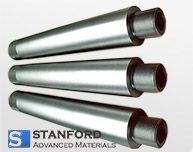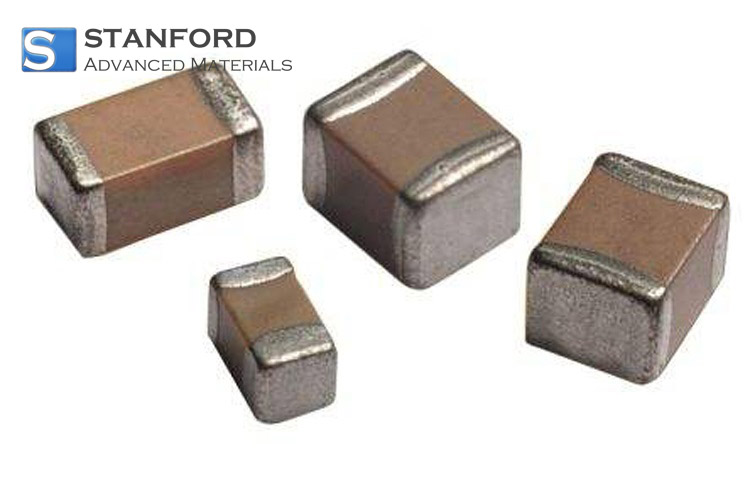Factors Affecting The Service Life Of Molybdenum Electrodes
The glass industry is a traditional sector with high energy consumption. Given the elevated costs for fossil energy sources and the stricter environmental protection requirements, the melting technology has changed from conventional flame heating to electric melting technology. The electrode directly contacts the molten glass and transfers electrical energy to it. It is the principal device in the process of glass electrolysis.
The Molybdenum Electrode is an essential electrode material in glass electrolysis because it withstands high temperatures and resists corrosion, and it minimises the risk of glass colouring. It is expected that the electrode’s lifespan may equal or exceed that of the furnace; however, actual operation frequently results in damage. It is practically important to understand the various factors that influence the lifespan of molybdenum electrodes during glass electrolysis.
Oxidation of the Molybdenum Electrode
The molybdenum electrode is designed for high temperature resistance, but it reacts with oxygen at elevated temperatures. When the temperature reaches 400 ℃, molybdenum begins to form molybdenum oxide (MoO) and molybdenum disulphide (MoO₂). These compounds adhere to the electrode surface and form an oxide layer, thereby promoting further oxidation. When the temperature reaches between 500 ℃ and 700 ℃, molybdenum oxidises to form molybdenum trioxide (MoO₃). This compound is a volatile gas that destroys the protective oxide layer; consequently, the newly exposed surface oxidises to MoO₃. Through repeated oxidation and vapourisation, the molybdenum electrode is continuously worn until it is fully damaged.

Reaction of the Molybdenum Electrode with Components in the Glass
At high temperatures, the molybdenum electrode reacts with certain components or impurities in the glass. This reaction results in significant electrode erosion. For example, a glass melt that contains As₂O₃, Sb₂O₃ and Na₂SO₄ as clarifying agents is highly dangerous because these additives oxidise to form MoO and MoS₂.
Electrochemical Reaction in the Glass Electrolysis
The electrochemical reaction occurs in the glass electrolysis zone at the interface between the molybdenum electrode and the molten glass. During the positive half-cycle of the alternating current supply, negative oxygen ions are transferred to the positive electrode, releasing electrons that, in turn, liberate oxygen. This oxygen then oxidises the electrode. During the negative half-cycle, some cations from the molten glass (e.g. boron) migrate to the negative electrode. This migration leads to the formation of molybdenum electrode compounds that deposit loosely on the surface, thereby damaging the electrode.
Temperature and Current Density
The erosion rate of the molybdenum electrode increases with rising temperature. Provided that the glass composition and process temperature remain stable, current density becomes the factor controlling the electrode corrosion rate. Although the maximum allowable current density of the molybdenum electrode can reach 2~3 A/cm², high current flow accelerates erosion.
Conclusion
We thank you for reading this article. We hope it assists in understanding the factors that influence the lifespan of molybdenum electrodes. If you require further information on molybdenum alloys, please visit Stanford Advanced Materials (SAM) for further details.
Stanford Advanced Materials (SAM) is a global supplier of molybdenum and has over two decades of experience in the manufacturing and distribution of molybdenum products. The company supplies products that meet the research and production requirements of its customers. We trust that SAM will be your chosen molybdenum supplier and business partner.

 Bars
Bars
 Beads & Spheres
Beads & Spheres
 Bolts & Nuts
Bolts & Nuts
 Crucibles
Crucibles
 Discs
Discs
 Fibers & Fabrics
Fibers & Fabrics
 Films
Films
 Flake
Flake
 Foams
Foams
 Foil
Foil
 Granules
Granules
 Honeycombs
Honeycombs
 Ink
Ink
 Laminate
Laminate
 Lumps
Lumps
 Meshes
Meshes
 Metallised Film
Metallised Film
 Plate
Plate
 Powders
Powders
 Rod
Rod
 Sheets
Sheets
 Single Crystals
Single Crystals
 Sputtering Target
Sputtering Target
 Tubes
Tubes
 Washer
Washer
 Wires
Wires
 Converters & Calculators
Converters & Calculators
 Write for Us
Write for Us


 Chin Trento
Chin Trento



